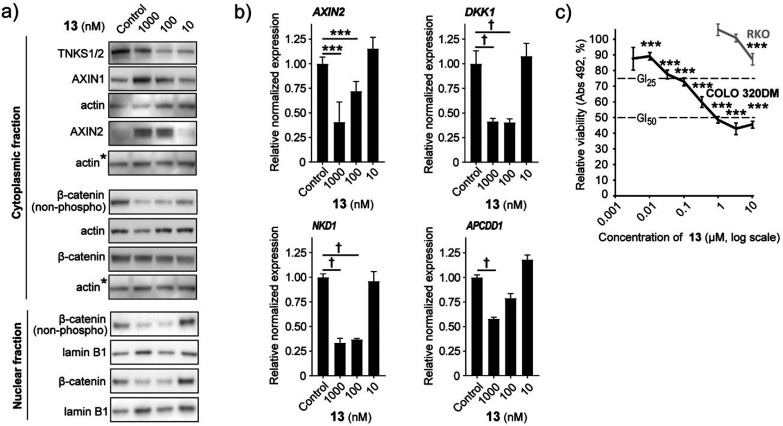Figure 5.
13 can inhibit WNT/β-catenin signaling activity and act as an antiproliferative agent in COLO 320DM cells. (a) Representative immunoblots of cytoplasmic TNKS1/2, AXIN1, AXIN2 and cytoplasmic and nuclear transcriptionally active β-catenin (non-phospho) and β-catenin. Actin or lamin B1 document equals protein loading, and ∗ indicates that the same actin immunoblot is used as loading control for both AXIN2 and β-catenin. For (a) and (b), control = 0.01% DMSO. (b) Real-time RT-qPCR analyses of WNT/β-catenin signaling target genes (AXIN2, DKK1, NKD1, and APCDD1). For (b) and (c), ANOVA tests (Holm–Sidak method, versus control) are indicated by ∗∗∗ (P < 0.001), and ANOVA on ranks tests (Tukeys test versus control) are indicated by † (P < 0.05). Mean values ± standard deviations for combined data from a minimum of three independent experiments with three replicates each are shown. (c) MTS colorimetric cell growth assay for various doses of 13 in APCmutated COLO 320DM (black) and APCwild-type RKO (gray) cells. Control = 0. 1% DMSO. Dotted lines depict 50% (GI50) and 25% (GI25) growth inhibition levels. Mean values ± standard deviations for one representative experiment out of three independent experiments are shown.

